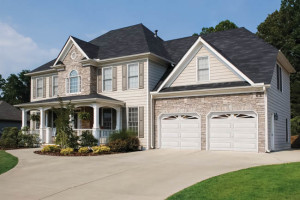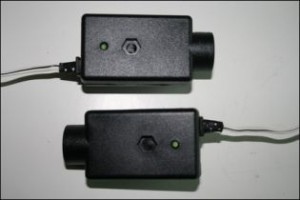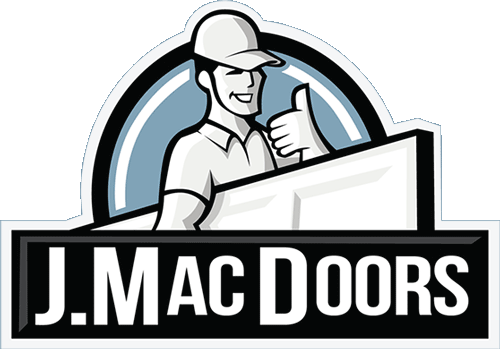With proper care and regular maintenance, you’ll keep your garage door working longer and safer.
Your garage door is a big investment not only in dollars, but also in time, convenience, and potential injuries if something goes wrong! Like any piece of machinery your garage door requires a bit of preventative maintenance if you want to realize its full potential. While some things will require a qualified service professional there are many easy to perform adjustments that can greatly increase the longevity and the safety of your door.
Jim’s 1 Minute Maintenance Summary
Maintaining Wood Garage Doors

If you have a wood door, you should understand that wood will expand and contract slightly with changing temperatures and humidity levels. This is especially true in coastal regions (like here in Vancouver), or areas near large lakes. One of the things that you should regularly check for are loose hinges. The movement of the wood will gradually loosen the nuts that hold the hinges in place. Most wooden doors can be adjusted with a 7/16th” wrench. You don’t need a ton of force, but it should be tight enough that you cannot move it by hand. If while adjusting your hinges you notice any rusted bolts or nuts they should be replaced. If you see any unusual looking bends, or worse – a crack in you hinge, you should definitely replace it at once. Wood doors also require frequent repainting on the exterior. You should take a good look at it and if you can see any chips or cracks in the paint (particularly on the bottom rail near the corners) – it is time to freshen up the paint, remember that water damage will make your wood door deteriorate faster than any other issue.
Maintaining Steel Garage Doors

If you have a steel door you will want to inspect the hinges to ensure they are not bent or cracked, and if they squeal when moving you will want to lubricate them at each end of the chamber. Rollers should be able to freely move from side to side within the hinge. Also inspect the struts to see if they have become loose or bent.
Check the Rollers
For all types of doors you will want to check that the rollers are able to roll (not drag or slide), and that the wheel is perpendicular to the axle, if it is not, then it should be replaced. Another part of your door you should look at is the weather seal on the bottom of your door. It should be pliable, and free of cracks or tears. Your weather seal stops rain from entering your garage, and it also acts as a deterrent for mice and other small vermin. If your weather seal isn’t quite up to snuff, you may want to look into replacing it. One last thing to do is to lubricate the face of your torsion springs as well as the bushing at the tail of the torsion spring (this doesn’t apply if you have extension springs) and the end bearing plates.
Optical Safety Sensors
 While doing this maintenance, you should also test the optical safety sensors on your opener. To do this open the door all the way, then using the remote close the door, and while it is closing use a broom to obstruct the safety sensors. The door should instantly reverse to the open position, if it doesn’t call a professional immediately to repair this critical safety feature. The other important safety feature to test is the impact reverse feature. To test this put a 2×4 on the ground under the door and close the door with the wall button or the remote. The door should begin to close, touch the wood, and then reverse back to the open position.
While doing this maintenance, you should also test the optical safety sensors on your opener. To do this open the door all the way, then using the remote close the door, and while it is closing use a broom to obstruct the safety sensors. The door should instantly reverse to the open position, if it doesn’t call a professional immediately to repair this critical safety feature. The other important safety feature to test is the impact reverse feature. To test this put a 2×4 on the ground under the door and close the door with the wall button or the remote. The door should begin to close, touch the wood, and then reverse back to the open position.
Be Careful!
Remember to be very careful around the torsion system, and do not attempt any repairs or adjustments on the torsion system as it can be very dangerous. If you aren’t comfortable with any of this you should schedule a professional to come and help you.
Written by Paul.
